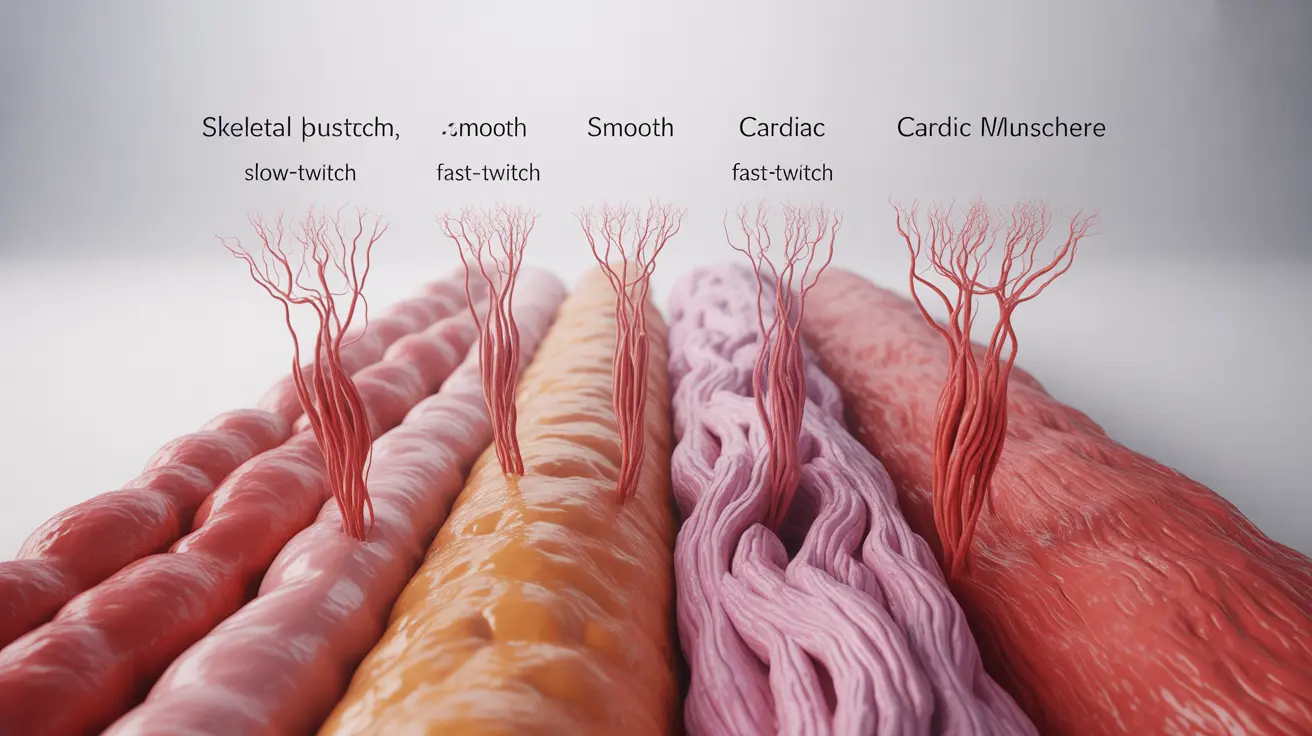Muscle fibers are the fundamental building blocks of our muscular system, playing crucial roles in everything from maintaining posture to powering athletic performance. These specialized cellular structures are designed to contract and generate force, enabling movement and vital bodily functions. Understanding the different types of muscle fibers and their unique characteristics can help us better appreciate how our bodies function and adapt to various physical demands.
Types of Muscle Fibers in the Human Body
The human body contains three primary categories of muscle fibers, each with distinct characteristics and functions:
Skeletal Muscle Fibers
Skeletal muscle fibers are voluntary muscles attached to bones, responsible for movement and posture. These fibers can be further categorized into two main types:
- Type I (Slow-twitch) fibers
- Type II (Fast-twitch) fibers
Smooth Muscle Fibers
Found in internal organs and blood vessels, smooth muscle fibers operate involuntarily to maintain essential bodily functions. These specialized fibers work continuously without conscious control.
Cardiac Muscle Fibers
Unique to the heart, cardiac muscle fibers possess characteristics that enable them to contract rhythmically and continuously throughout our lives without fatigue.
The Science of Slow-Twitch vs. Fast-Twitch Fibers
Understanding the differences between slow-twitch and fast-twitch muscle fibers is crucial for both athletes and fitness enthusiasts:
Slow-Twitch (Type I) Characteristics
These fibers excel in endurance activities and have specific traits:
- Higher mitochondrial density
- Better oxygen utilization
- Slower contraction speed
- Greater fatigue resistance
Fast-Twitch (Type II) Characteristics
Fast-twitch fibers are specialized for powerful, explosive movements:
- Rapid contraction speed
- Higher force production
- Quicker fatigue rate
- Less reliance on oxygen
Muscle Fiber Structure and Force Generation
The structure of muscle fibers directly influences their ability to generate force. Each fiber contains myofibrils composed of sarcomeres, the basic functional units of muscle contraction. These structures work together through a process called the sliding filament theory to produce movement.
Training and Muscle Fiber Adaptation
While genetics largely determine your initial muscle fiber composition, specific training methods can influence how these fibers function and adapt:
- Endurance training enhances slow-twitch fiber efficiency
- Resistance training can increase fast-twitch fiber size
- Cross-training may optimize both fiber types
Frequently Asked Questions
What are the different types of muscle fibers and how do they affect muscle function? Muscle fibers come in three main types: skeletal (voluntary muscles), smooth (involuntary muscles in organs), and cardiac (heart muscle). Each type has specific characteristics that determine its function, from powerful contractions in skeletal muscles to rhythmic beating in cardiac muscles.
How do slow-twitch and fast-twitch muscle fibers differ in their energy use and endurance? Slow-twitch fibers primarily use aerobic metabolism, making them more efficient for endurance activities but producing less force. Fast-twitch fibers rely more on anaerobic metabolism, generating more power but fatiguing more quickly.
What roles do skeletal, smooth, and cardiac muscle fibers play in the body? Skeletal muscle fibers control voluntary movement and maintain posture. Smooth muscle fibers regulate internal organ function and blood vessel diameter. Cardiac muscle fibers enable the heart to pump blood continuously throughout life.
Can muscle fiber types change with exercise or training? While you cannot completely change your genetic muscle fiber composition, training can enhance the efficiency and performance characteristics of existing fibers. Different types of exercise can influence how these fibers function and adapt.
How does the structure of muscle fibers influence their ability to contract and generate force? The internal structure of muscle fibers, particularly their arrangement of contractile proteins (actin and myosin) within sarcomeres, determines their contraction strength and speed. This organization affects how effectively the fiber can generate force during physical activity.




